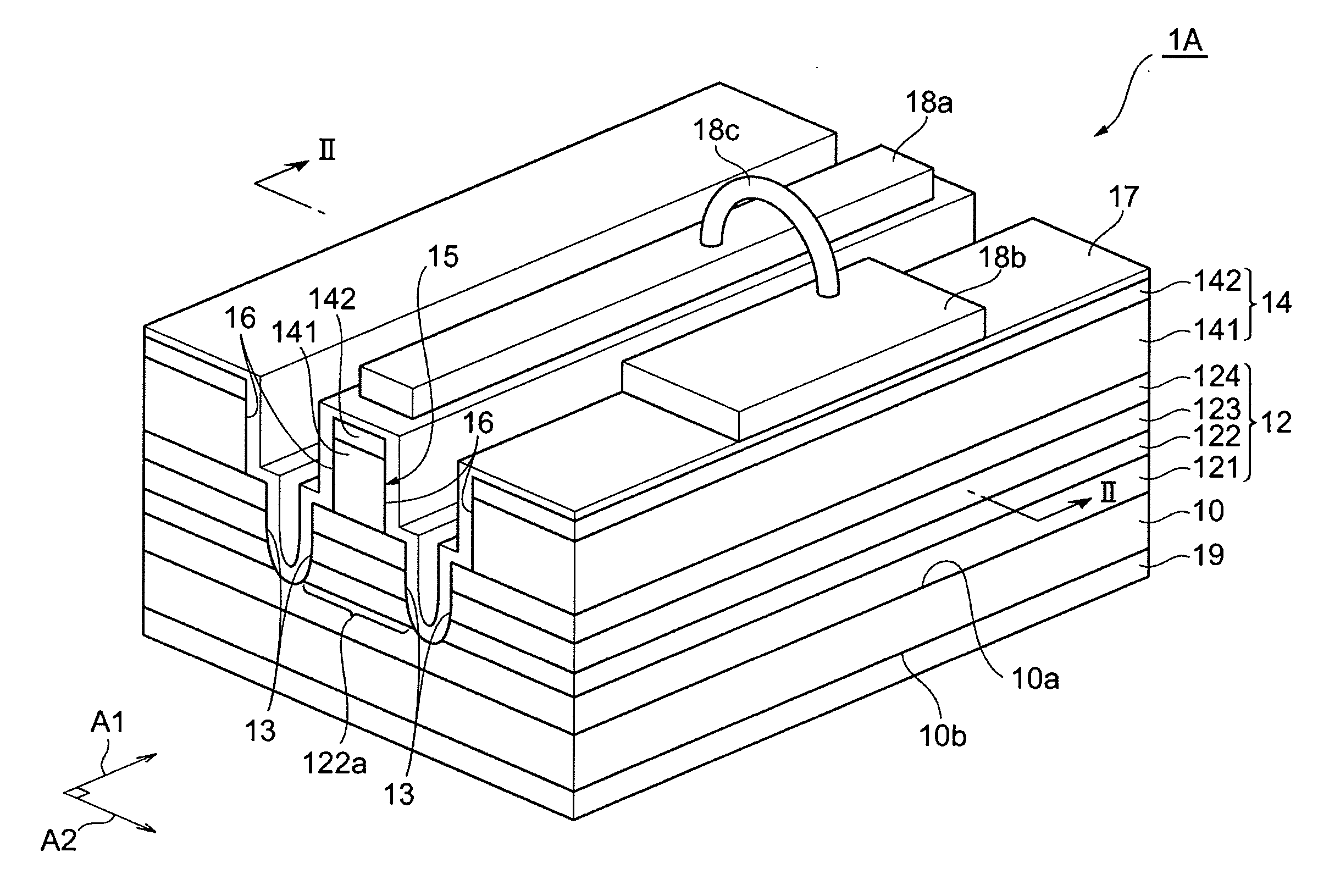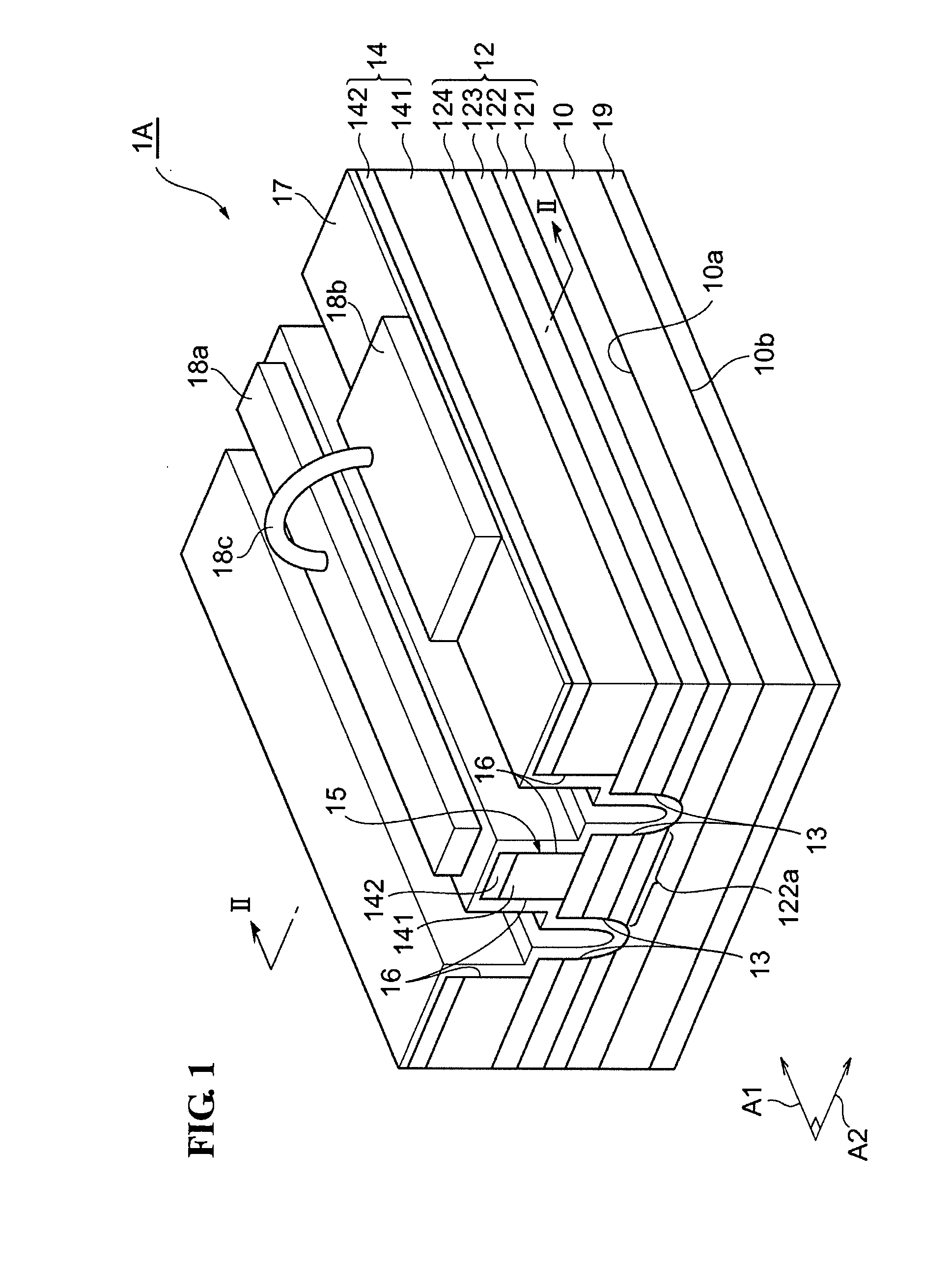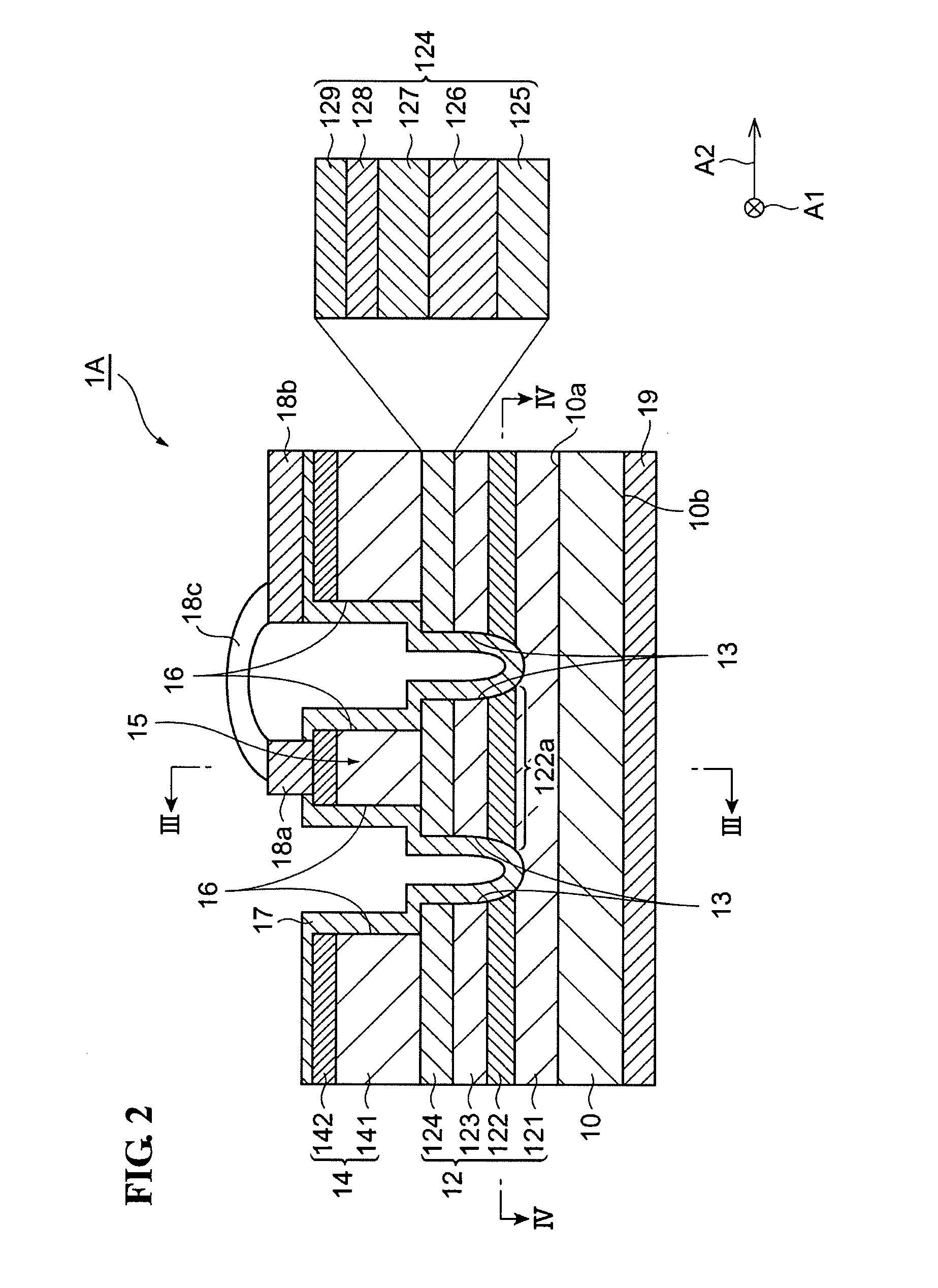Semiconductor laser device and method for producing the same
a laser device and semiconductor technology, applied in the direction of lasers, semiconductor lasers, solid-state devices, etc., can solve the problems of degrading the high-frequency response characteristics and the difficulty of obtaining the high-speed operation of the semiconductor laser device, so as to improve the parasitic capacitance of the device, increase the capacity, and reduce the parasitic capacitance
- Summary
- Abstract
- Description
- Claims
- Application Information
AI Technical Summary
Benefits of technology
Problems solved by technology
Method used
Image
Examples
second embodiment
[0062]FIG. 8 is a cross-sectional view showing a configuration of a semiconductor laser device according to a second embodiment of the present invention. FIG. 9 is a cross-sectional view of the semiconductor laser device taken along line IX-IX of FIG. 8. A difference between a semiconductor laser device 1B of this embodiment and the semiconductor laser device 1A of the first embodiment will now be described.
[0063]The semiconductor laser device 1B of this embodiment differs from the semiconductor laser device 1A of the first embodiment in the configuration of a pair of first trenches 13. Specifically, the semiconductor laser device 1B includes a pair of first trenches 21 instead of the pair of first trenches 13 in the first embodiment. The pair of first trenches 21 is provided in order to block a current that bypasses a region where a diffraction grating 122a is formed. More specifically, the pair of first trenches 21 is formed along both side faces of a semiconductor ridge structure...
PUM
 Login to View More
Login to View More Abstract
Description
Claims
Application Information
 Login to View More
Login to View More - R&D
- Intellectual Property
- Life Sciences
- Materials
- Tech Scout
- Unparalleled Data Quality
- Higher Quality Content
- 60% Fewer Hallucinations
Browse by: Latest US Patents, China's latest patents, Technical Efficacy Thesaurus, Application Domain, Technology Topic, Popular Technical Reports.
© 2025 PatSnap. All rights reserved.Legal|Privacy policy|Modern Slavery Act Transparency Statement|Sitemap|About US| Contact US: help@patsnap.com



